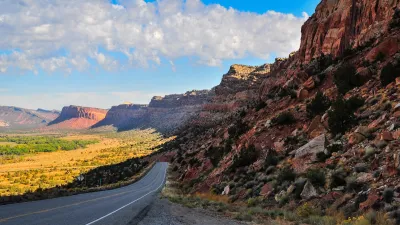C-MORE grants were earmarked for industry trade groups and universities.

Nearly two dozen projects related to measuring and reducing carbon emissions in construction materials have been terminated by the EPA. The grants, issued through the C-MORE program (Construction Material Opportunities to Reduce Emissions) were issued for economic purposes. The goal was to support US construction products to be more competitive both domestically and in international markets that have more stringent emissions requirements.
Reporting on the cuts, Inside Climate News lists the 21 projects whose grants were terminated. Among universities and research projects, many of the grants were earmarked for trade organizations like the National Asphalt Pavement Association, the Portland Cement Association, the National Ready Mixed Concrete Association and others. The list of cuts was provided by the EPA to the Sierra Club through a public records request.
The Inside Climate News article quotes Max Puchtel from the American Institute of Steel Construction, one of 19 trade groups that sent a letter to the EPA in February urging them to maintain the grants.
“This program will drive innovation by funding projects that improve energy efficiency, giving U.S. manufacturers a competitive edge in key industries like automotive, steel, concrete, aluminum, chemicals, and construction,” the letter said. “It will lower long-term costs, boost profitability, and strengthen domestic supply chains, making U.S. companies more resilient and less reliant on foreign suppliers. Ultimately, it will enhance energy independence, secure jobs, and create new opportunities.”
Read Inside Climate News’ full report below.
FULL STORY: EPA Decimates Grant Program Aimed at Measuring and Reducing Construction Material Emissions

Manufactured Crisis: Losing the Nation’s Largest Source of Unsubsidized Affordable Housing
Manufactured housing communities have long been an affordable housing option for millions of people living in the U.S., but that affordability is disappearing rapidly. How did we get here?

Americans May Be Stuck — But Why?
Americans are moving a lot less than they once did, and that is a problem. While Yoni Applebaum, in his highly-publicized article Stuck, gets the reasons badly wrong, it's still important to ask: why are we moving so much less than before?

Research Shows More Roads = More Driving
A national study shows, once again, that increasing road supply induces additional vehicle travel, particularly over the long run.

Jane Goodall Inspires with Message of Hope, Resilience, and Environmental Action
Speaking in Pasadena, Jane Goodall offered a hopeful and inspirational message, urging global compassion, environmental responsibility, and the power of individual action to shape a better future.

Harnessing the Power of Fungi for Environmental Cleanup
Mycoremediation — the use of fungi to break down or absorb environmental pollutants — offers a promising, cost-effective, and eco-friendly alternative to conventional methods for restoring contaminated sites.

For Advice on Accessibility, Look to Iceland
Cities around the country installed over 1,700 wheelchair ramps in the last five years, thanks in part to one man’s initiative.
Urban Design for Planners 1: Software Tools
This six-course series explores essential urban design concepts using open source software and equips planners with the tools they need to participate fully in the urban design process.
Planning for Universal Design
Learn the tools for implementing Universal Design in planning regulations.
Heyer Gruel & Associates PA
City of Moreno Valley
Institute for Housing and Urban Development Studies (IHS)
City of Grandview
Harvard GSD Executive Education
NYU Wagner Graduate School of Public Service
City of Cambridge, Maryland
Newport County Development Council: Connect Greater Newport





























